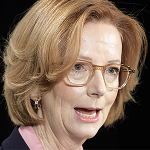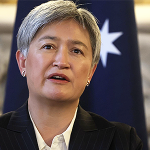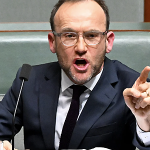In an age of censorship and conformity, social media memes have proven cut through on issues thought outside the bounds of ‘acceptable’ debate. They serve as a Trojan horse for injecting hard truths and outside-the-box ideas into public discourse under the guise of humour.
In this context, the tragedy of the Liberal Party’s election campaign was its values vacuum. By offering little in the way of values, it deprived itself of a crucial ingredient in the battle for the hearts and minds of young Australians.
To be politically effective, the Young Liberal meme campaign needed values and policies to create original, edgy material to bounce off. The failure to offer such meant its social media campaign fell flat on its face, with many of the memes published coming across as absurd and silly.
The Liberals’ campaign failed to resonate with young people who want daring and substantive solutions to the problems they are facing. There has rarely been a moment when Australia has so needed solutions, urgently. After all, we are in the midst of a cost-of-living crisis, a housing shortage, persistent inflation, record levels of debt, high immigration, and rising social unrest. This is a time for creativity and courage. Yet, the Liberals offered only marginally different policies from Labor. No amount of meme wizardry can inspire excitement about a few cents off fuel or housing schemes that simply offer access to more debt.
Screenshot from Young Liberals’ Instagram
It is the forbidden nature of the idea communicated by the meme that gives it appeal. That is precisely why they are a threat to institutional power and a gift to political outsiders. Donald Trump was one such outsider and much has been made of the role social media played in his 2016 victory. His online campaign was incredibly effective at speaking to 21st Century archetypes and grievances that had not yet found a home in mainstream discourse.
The memes from the MAGA movement social media campaign were organic and effective, albeit often just a rudimentary take on the concepts critiqued. A striking example was a poorly drawn video game character with no agency, in a simply drawn crowd of cartoon people, that could barely muster the phrase ‘Orange Man Bad’. The formula was simple: Donald Trump was a disruptive figure, challenging the established, cookie-cutter political order. This meme reframed public perception – from ‘Trump supporters are ignorant and hateful’ to ‘Trump supporters are independent thinkers’.
This was more than just humorous political content. It gave form to provocative and often censored ideas. Crude as it may have seemed, its function was more akin to artistic expression – captured in the idiom, ‘when words fall short, art takes over’.
The memes published by the Liberal Party couldn’t have been more different. With the left dominating both cultural and political institutions, memes should be a natural weapon for the political right. But in order to wield that weapon effectively, a party must first have something to say – something meaningful and bold.
With such a message, memes can then be used to disarm the audience, creating a permission structure to engage with issues they might otherwise reject. This is why memes matter. They are not just promotional tools, but conduits for ideas that might otherwise be censored. If the Liberals had dared to push the boundaries – to propose bold reforms, based on values which challenged the political class’ orthodoxy on issues like immigration, housing, or national identity – they might have found themselves embraced by the key demographic of younger Australians. As it was, they were ridiculed.
The Liberals’ campaign was a race to the bottom. To win the votes of young people, the party must provide a bold and daring policy platform and proper leadership. Under those conditions, the memes will make themselves.
Brianna McKee is a Research Fellow and National Manager of Generation Liberty at the Institute of Public Affairs.








